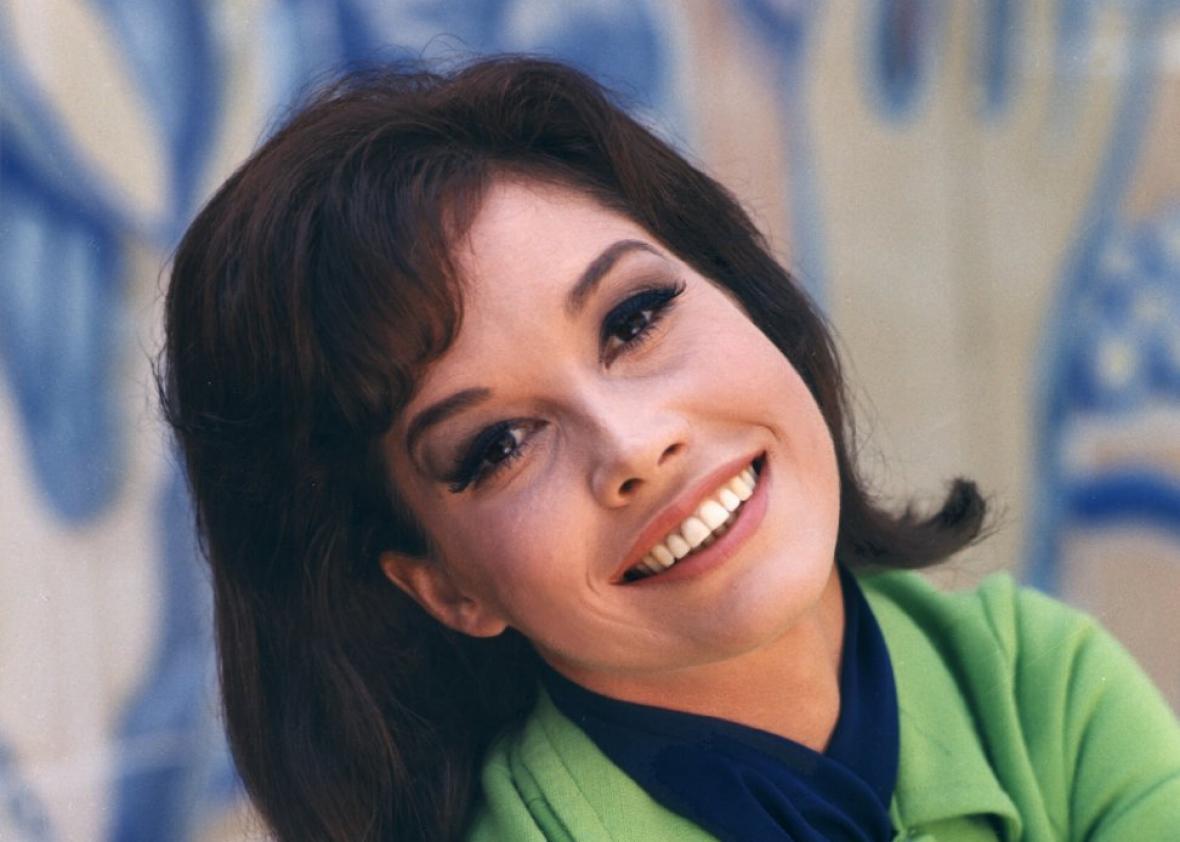Mary Tyler Moore died Wednesday at the age of 80, but her ghost is all over television. Moore was already famous for co-starring in The Dick Van Dyke Show when she became iconic as The Mary Tyler Moore Show’s Mary Richards, a single working woman whose influence is nearly impossible to overstate. Mary Richards was an enormously likable everywoman who starred in a multicamera sitcom about a group of irascible colleagues who were going to make it after all. The archetype and the form may be out of style, but Moore and her show will never be out of imitators.
When the series, created by Allan Burns and James L. Brooks, was originally pitched to CBS, with Richards as a divorcée, one executive—unable to foresee the rise of Seinfeld—said “American audiences won’t tolerate divorce in a series’ lead any more than they will tolerate Jews, people with mustaches, and people who live in New York.” It’s hard to imagine that audiences wouldn’t have tolerated Moore in any form, but when the first episode aired in 1970, Mary Richards arrived in Minneapolis, recovering not from a divorce but a broken engagement. She applies for a job as a receptionist at WJM-TV and is instead hired as an assistant producer by the grouchy, good-hearted Lou Grant (Ed Asner), despite the fact that that Mary’s “got spunk. I hate spunk.”
Richards did have spunk, perhaps only matched by Moore’s own. Mary Tyler Moore made hard things look easy: She was an ace fake-laugher, she did pratfalls with grace. She is a resounding rejoinder to the current idea that likability is somehow uninteresting. Without Mary there is no Rachel Green, another irrepressibly lovable sitcom heroine, or Liz Lemon, another working woman managing the madness of a TV show, or Carrie Bradshaw, another woman exploring singledom without letting it swamp her. Without Mary Richards there isn’t Leslie Knope, whose indefatigable positivity and boundless ambition are Mary turned up to 100, or Hannah Horvath and all her willfully irksome ilk, characters conceived both in opposition to the contagiously likable Mary and also in her image, young working women devoted to figuring out exactly who they are. (Even Hannah Horvath sometimes falls asleep watching The Mary Tyler Moore Show.)
The Mary Tyler Moore Show’s influence is just as great as the influence of Moore herself—and Moore was not just its star, she was also one of its producers. The series was a workplace comedy, with Mary and Lou working alongside buffoonish anchor Ted Baxter (Ted Knight), the sardonic Murray Slaughter (Gavin MacLeod), and eventually the lascivious Sue Ann Novens (Betty White) at a failing news station. You can draw a direct line from the hijinks at WJM to shows like Sports Night, NewsRadio, and 30 Rock. MTM’s wonderful finale ends with a long, sniffling, snotty group hug, shuffling toward a box of Kleenex. “Thank you for being my family,” Mary tearfully tells her colleagues, establishing the blueprint for shows about strangers, be they the co-workers of the American The Office or the regulars at Cheers, who become as enmeshed as relatives. Before Valerie Harper left MTM for her own show, Mary’s close friendship with her brash neighbor Rhoda made MTM one of the original female friendship comedies, featuring a relationship, unlike that of Lucy and Ethel, that dealt with careers and dating and influenced everything from Sex and the City to Broad City. And that’s to say nothing of the shows and characters inspired by Mary Tyler Moore and The Mary Tyler Moore Show’s flat-out artistry, the precision of its structure, and the sheer joyfulness of Moore’s performance.
The Mary Tyler Moore Show stopped airing nearly 40 years ago, but it is still in conversation with so many contemporary issues, about feminism, women in the workplace, friendship, relationships. In one episode, Mary, who is called by a “women’s libber” by Lou Grant, asks for, and eventually receives, a raise when she realizes her predecessor was making $50 more than her. She’s got the kind of job, in Rhoda’s formulation, that “Gloria Steinem wants you to have.” By Mary’s own reckoning she’s gone on 1,800 dates, most of them bad, but —perhaps because of the relatively prudish standards of the time—the show elides the specifics of Mary’s sex life. (Though she definitely had one. She was on the pill.) Rather than make the show seem old-fashioned, it makes it seem progressive. The series ends with Mary still single, embraced by her work family, figuring out life on her own terms.
